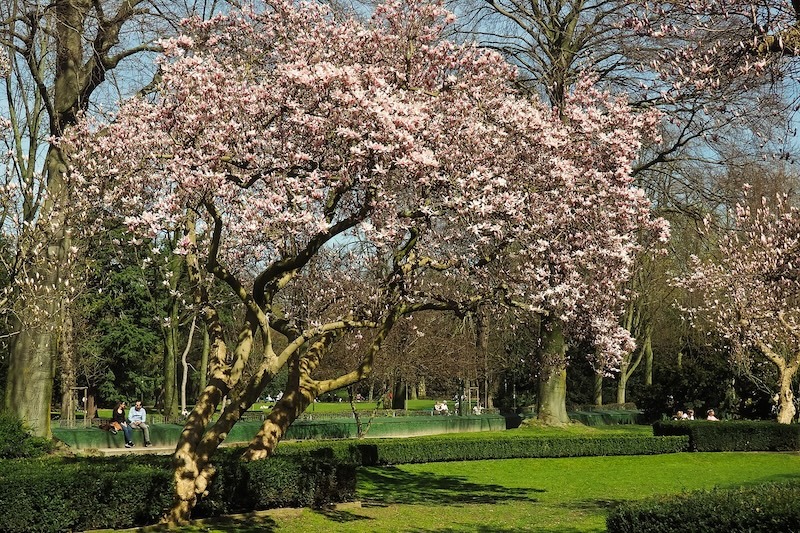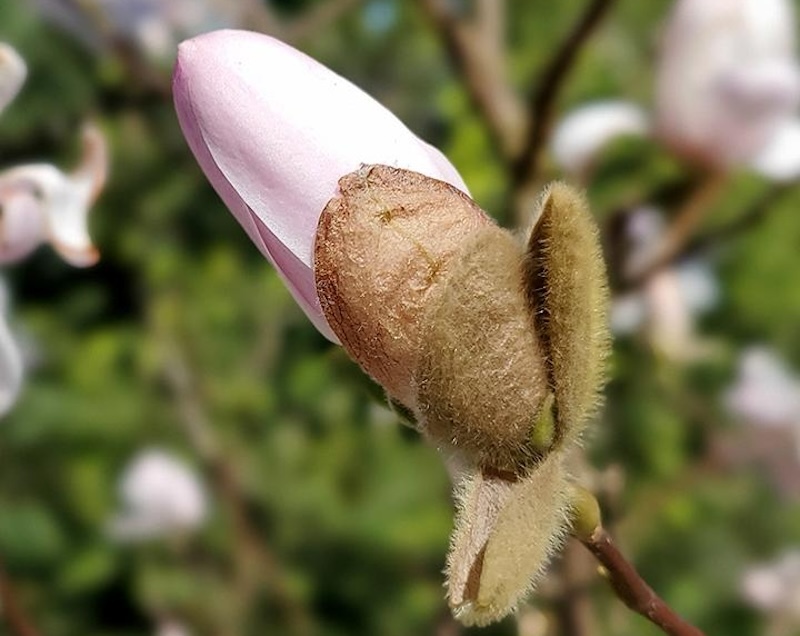Growing Magnolia Tree
There are hundreds of Magnolia cultivars, and while they vary greatly, one thing all varieties have in common is lovely, large flowers, often with a sweet fragrance. The flowers give way to seed pods later in the season, providing visual interest and a good food source for birds.
Magnolia trees have a branched, woody structure. Some Magnolia trees are evergreen, and others are deciduous. Many of the deciduous varieties will have flowers in the spring before the leaves emerge. These trees can reach 80 feet tall by 40 feet wide, while other types stay much smaller. Magnolias grow in zones 4 through 9, depending on the type.

Planting Magnolia Tree
Plant Magnolia trees in moist, well-drained soil. Drainage is important because Magnolias like moisture but do not like wet feet. These trees prefer slightly acidic soil but can handle a neutral or alkaline pH. Provide soil that has high organic content to support continued growth. The ideal spot for Magnolias will receive full to partial sunlight. Plant Magnolias in an area that receives morning sun and afternoon shade in hot climates.
Watering Magnolia Tree
Consistently water newly planted Magnolia trees twice per week for the first growing season. Saturate the soil around the base of the plant to establish the root system. Mature trees are drought tolerant and typically can be sustained by rainfall alone. Plan to water established Magnolia trees during a drought to support growth and future blooming.
Fertilizing Magnolia Tree
Feed Magnolias to keep them healthy and growing. Amend the soil with organic compost or manure when planting and top-dress the soil with organic mulch each spring. Support the tree by fertilizing it during the growing season. Feed Magnolias in the spring, early summer, and mid to late summer.
Use a balanced fertilizer that has a ratio of 10-10-10 or 20-20-20. A water-soluble fertilizer can be applied during routine watering, or use a slow-release fertilizer to continually support new growth.
Pruning Magnolia Tree
Shape young Magnolias during the late spring or early summer. These trees bloom on old wood and start developing flower buds in the summer, so pruning too late after in the season will reduce flowering the following year. Prune just after the flowers fade in spring to avoid removing next year’s buds.
Remove no more than one-third of the tree at a time. Prioritize removal of younger, lower branches to clean up the look. Mature Magnolia trees seldom need pruning but benefit from removal of dead and damaged growth as required.

Caring For Magnolia Tree in Pots
Growing Magnolias in containers allows for flexible placement options so you can enjoy the fragrant flowers on a deck or patio. Container-grown plants also make it possible to feature Magnolias in areas outside of their growing range. Plant one tree in a 14-inch container. Water when the top few inches of soil are dry. The container must have drainage so that excess water can run through the pot. Use rich soil that is moist but well-drained.
Winter Care for Magnolia Tree
Trees grown in warm zones do not need winter care or protection, while Magnolias in colder regions may need extra care. Apply a thick layer of mulch around the tree's base to insulate the shallow roots from freezing temperatures. Wrap the trunk in landscape fabric in areas with frigid winter weather. Magnolias are early bloomers, so monitor the weather and remove any protective coverings before the flowers emerge.
 |
Author Alison Cotsonas - Published 2024-04-09 |
